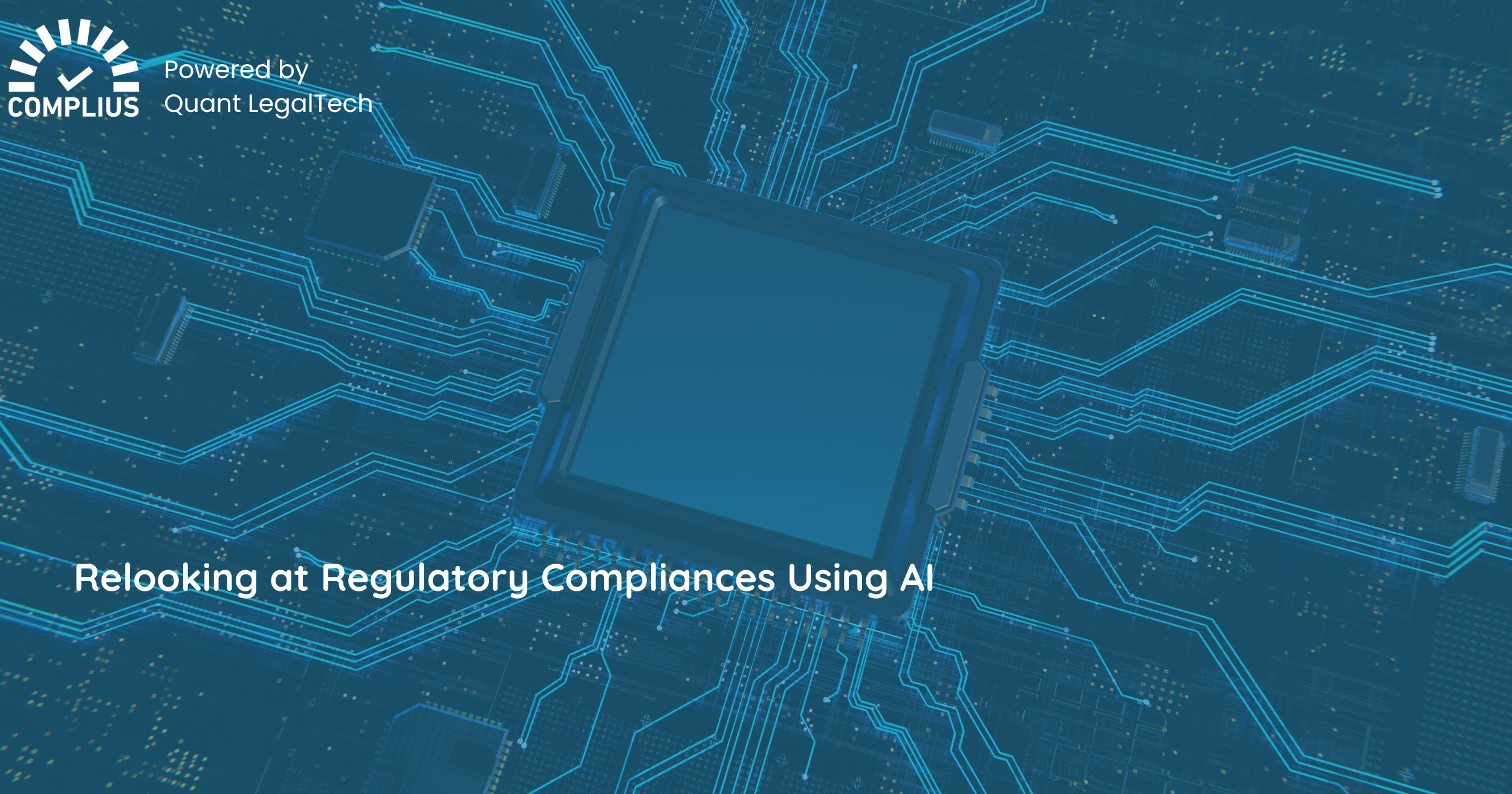Choose another country or region to see content specific to your location
Relooking at Regulatory Compliances Using AI
May 27, 2024

Introduction:
Regulatory compliance has been a time and cost-intensive, expert-driven, text-heavy area of the legal industry. With the advent of AI integration, we are witnessing a transformative shift towards more efficient, accurate, automated, and proactive compliance management. GenAI including Large Language Models (LLMs) are a boon for the legal industry as they can automate numerous language-driven legal and compliance areas on scale. Let’s delve into how AI is changing the game in the regulatory:
Regulatory Enhancements through AI:
a) Automating Compliance Monitoring & Reporting: One of the most impactful benefits of AI in regulatory compliance is its ability to automate tasks that are traditionally tedious and repetitive.
Key areas of automation include:
- Efficient Compliance Activity Management: AI systems can rapidly identify and summarize the necessary compliance activities for an organization. This capability allows compliance officers to dedicate more time to ensuring that these standards are met, rather than getting bogged down in the initial identification and planning stages.
- Real-Time Monitoring and Analysis: AI excels in continuously monitoring and analyzing data to ensure that business operations remain within regulatory frameworks. This real-time surveillance helps in preempting potential compliance issues before they escalate.
- Streamlined Report Generation: AI significantly enhances the efficiency and accuracy of compliance report generation. By integrating data from multiple sources within the organization, AI utilizes pattern recognition to pinpoint essential elements needed for reports. It can generate both text and visual data representations and compile them into the precise formats required by various regulatory bodies. This automated process ensures that the reports meet the stringent accuracy and specificity demands of regulatory agencies.
b) Enhanced Risk Management– AI enhances risk management by providing predictive insights that help companies foresee potential compliance issues before they arise.
- Predictive Modeling: Gen AI can help identify various types of risks and help build risk matrices for organizations based on their business and product/services requirements. By defining your own attributes related to various risks such as inherent or residual regulatory, financial, business, or other risk types, organizations can identify risk patterns and accordingly put in place the checks and balance to mitigate those risk.
- By identifying patterns and correlations between different data points, such as past breaches, regulatory changes, and internal compliance checks, AI can forecast areas of high risk. For instance, if a particular type of transaction has frequently led to compliance issues in the past, AI can flag similar future transactions for closer scrutiny.
- Anomaly Detection: AI excels in identifying outliers or anomalies in data that could signify potential compliance risks. Using techniques like machine learning and deep learning, AI can monitor transactions, communications, and operations in real-time, alerting companies to activities that deviate from the norm and may indicate compliance concerns or fraudulent behavior.
- Natural Language Processing (NLP): Gen AI utilizes advanced NLP to analyze textual data from a variety of sources such as emails, regulatory updates, and internal documents. This capability allows it to understand the context and nuances of communications and operations, helping to spot subtle signs of non-compliance that might be missed by traditional methods.
- Simulation and Scenario Analysis: Gen AI can simulate different business scenarios to test how well company practices adhere to regulatory requirements under various conditions. This can help businesses understand potential vulnerabilities and prepare more effectively for regulatory changes.
- Continuous Learning and Adaptation: Unlike static systems, Gen AI systems are designed to learn and adapt over time. As they are exposed to new data and scenarios, these systems refine their models and predictions, improving their accuracy and reliability in identifying compliance risks.
By implementing these advanced capabilities, AI can provide a more dynamic, proactive approach to risk management in compliance, helping companies stay ahead of potential issues and adapt more quickly to regulatory changes.
c) Proof/ Document review – AI is revolutionizing proof/document reviewing processes, particularly in compliance activities. With the concerned Act/Rule, AI can streamline proof validation tasks, ensuring accuracy and efficiency. By leveraging advanced algorithms, AI automates the review process, reducing manual effort and minimizing errors. This transformative approach not only saves time but also enhances compliance effectiveness. Embracing AI-driven proof reviewing is essential for organizations seeking to stay ahead in regulatory compliance and achieve operational excellence. AI will be tasked with reading compliance activities along with their respective descriptions, section descriptions, and due dates. Subsequently, it will validate these activities with the provided proof by analyzing each and every line item.
This AI-driven validation process will improve accuracy and efficiency while ensuring thorough compliance checks. By automating the validation process, we expect to streamline operations and reduce errors or oversights.
Conclusion:
The integration of Artificial Intelligence into compliance processes marks a transformative shift in how businesses manage regulatory obligations and mitigate risks. AI’s ability to automate, predict, and continuously learn provides organizations with the tools to not only keep pace with the dynamic landscape of regulatory requirements but also to stay ahead of potential compliance issues. From automating tedious tasks like monitoring and reporting to employing sophisticated predictive models and anomaly detection, AI enhances the accuracy, efficiency, and effectiveness of compliance programs. As regulatory complexities grow, AI’s role becomes increasingly vital, offering a proactive approach that can adapt and evolve with the changing regulations. By embracing AI in compliance, companies can ensure they not only meet current regulatory demands but are also prepared for future challenges, maintaining integrity and trust in an ever-changing corporate environment.
For more guidance you can visit our website at www.quantlegaltech.com or write to us at sales@quantlegaltech.com.